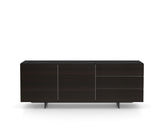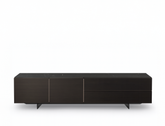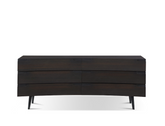Scandinavian Calm with a Feng Shui Twist

Imagine stepping into a room that exudes calmness while radiating style—a space where every element whispers serenity and every corner is a testament to elegance. This is the enchanting allure of Scandinavian interior design, especially when it’s infused with the principles of Scandi-Shui. In Singapore, where the hustle and bustle of city life can be overwhelming, creating a tranquil retreat within your home is not just desirable—it’s essential. Scandinavian design offers that perfect blend of minimalist beauty and functional harmony, while Scandi-Shui enhances it by adding the timeless wisdom of Feng Shui. Together, they form an interior design philosophy that turns your living space into a serene sanctuary.
The Essence of Scandinavian Interior Design in Singapore
At the heart of Scandinavian interior design lies a deep appreciation for simplicity, functionality, and a connection to nature. Originating from the Nordic countries, this design style is characterised by clean lines, uncluttered spaces, and an emphasis on practicality. In Singapore, where space is often at a premium, the minimalistic approach of Scandinavian design becomes especially relevant. It allows homeowners to create stylish yet functional living areas without overwhelming the senses.
Natural elements play a crucial role in Scandinavian design. Light-coloured woods like pine, oak, and birch are often used in furniture and decor, lending warmth and texture to interiors. The inclusion of plants, stones, and organic textiles further enhances the connection to nature, creating a space that feels both welcoming and soothing. The abundance of natural light, a key feature of Scandinavian interiors, is particularly important in Singapore, where the bright, tropical sun can be harnessed to illuminate and energise your living spaces.
Introducing Scandi-Shui: The Harmony of Two Worlds
Scandi-Shui is a unique blend of Scandinavian design principles with the ancient art of Feng Shui, which emphasises balance, energy flow, and harmony within a space. By integrating these two philosophies, Scandi-Shui creates interiors that are not only aesthetically pleasing but also spiritually uplifting. This design approach recognises the importance of a well-balanced environment in promoting overall well-being, making it an ideal choice for modern Singaporean homes.
Key Principles of Scandi-Shui Interior Design
-
Embrace Minimalism and Functionality: The foundation of Scandi-Shui lies in its commitment to minimalism. This means choosing furniture and decor that serve a purpose while keeping the space free of unnecessary clutter. Multi-functional furniture, such as a sofa that doubles as storage or a dining table that can be extended, is particularly suited to this style. By keeping the design simple and functional, you create a space that feels open, inviting, and easy to maintain.
-
Balance Natural Elements and Light: Natural elements are central to both Scandinavian design and Feng Shui. Incorporating materials like wood, stone, and organic textiles not only enhances the visual appeal of your home but also helps in creating a balanced and harmonious environment. Similarly, natural light is essential for promoting positive energy flow. Use sheer curtains or blinds to allow maximum light into your space, creating a bright and airy atmosphere.
-
Utilise Open Spaces for Energy Flow: In Feng Shui, the flow of energy, or Qi, is crucial for maintaining harmony within a space. Open layouts, a hallmark of Scandinavian design, support this by allowing energy to move freely throughout the home. Avoid overcrowding rooms with furniture; instead, focus on creating a sense of spaciousness that facilitates movement and enhances the overall energy of the space.
-
Incorporate Flexible and Multi-Functional Furniture: Scandinavian design is known for its emphasis on versatility. In a Scandi-Shui home, furniture should not only be functional but also adaptable to different needs. This could mean having a coffee table that can also serve as a workspace or a bookshelf that doubles as a room divider. By incorporating flexible furniture, you can easily adapt your space to suit various activities while maintaining a cohesive and harmonious design.
-
Create Focal Points and Social Spaces: In Scandi-Shui, every room should have a focal point that draws the eye and serves as the heart of the space. This could be a fireplace, a piece of art, or a beautifully designed piece of furniture. Additionally, creating intimate seating areas encourages social interaction and fosters a sense of community within the home. In Singapore’s urban environment, these cosy corners offer a perfect retreat from the outside world.
Balancing the Five Elements of Feng Shui in Scandinavian Interiors
One of the key aspects of Feng Shui is the balance of the five elements: wood, fire, earth, metal, and water. Each element has its own unique properties and contributes to the overall harmony of the space. Here’s how you can seamlessly integrate these elements into your Scandinavian-inspired home:
-
Wood: Wood represents growth and vitality, making it a vital element in any home. Incorporate light-coloured wooden furniture such as tables, chairs, and shelves made from pine, oak, or birch. Additionally, indoor plants, which also represent the wood element, can be strategically placed to enhance the flow of positive energy.
-
Fire: Fire symbolises warmth, passion, and energy. Introduce the fire element through candles, a modern fireplace, or warm-toned textiles like throws, pillows, or rugs in shades of red, orange, or yellow. Lighting elements such as floor lamps or pendant lights can also bring a cosy and inviting glow to your space.
-
Earth: Earth represents stability and grounding. Incorporate earthy tones like beige, taupe, and brown in your walls, textiles, or decor items. Natural materials such as clay pots, ceramic vases, or stone accents like a marble coffee table can further enhance the earth element in your home.
-
Metal: Metal is associated with clarity, precision, and efficiency. Choose metal furniture or decor items with sleek, clean lines, such as a metal-framed mirror, side table, or wall art. Metal finishes like stainless steel, brass, or copper can be used in fixtures, handles, or lighting elements to add a modern touch.
-
Water: Water represents flow, communication, and abundance. A small water feature, like a tabletop fountain, or the use of reflective surfaces such as mirrors or glass decor items, can introduce the water element into your home. Soft, flowing textiles like sheer curtains also contribute to a sense of movement and calm.
Selecting Natural Materials and Earthy Tones for a Serene Atmosphere
Creating a serene atmosphere in your home is all about making thoughtful choices when it comes to materials and colours. In a Scandi-Shui space, the use of natural materials and earthy tones is essential for promoting relaxation and well-being. Here’s how to achieve that calming effect:
-
Opt for Natural Materials: Furniture and decor items made from natural materials such as wood, stone, linen, and jute not only complement the Scandinavian aesthetic but also create a soothing environment. These materials are known for their durability and timeless appeal, making them perfect for a space designed to last.
-
Embrace Wooden Elements: Wood is a key element in both Scandinavian design and Feng Shui. Incorporate wooden furniture, flooring, or decorative items to add warmth and texture to your space. The natural beauty of wood brings a sense of tranquility and connection to the earth.
-
Go for Earthy Tones: Earthy colours like beige, taupe, and shades of brown and green evoke the natural world and create a calming atmosphere. These tones are also associated with the Feng Shui elements of earth and wood, further enhancing the sense of balance and harmony in your home.
-
Incorporate Subtle Patterns and Textures: While Scandinavian design often favours simplicity, adding subtle patterns and textures can bring depth and interest to your space. Consider woven rugs, knitted throws, and patterned cushions to add a layer of coziness without overwhelming the minimalist aesthetic.
-
Maximise Natural Lighting: Natural light is a vital component of Scandinavian design. Use sheer curtains or blinds to allow sunlight to fill your living room, enhancing the mood and promoting a sense of well-being. Natural light also plays a crucial role in Feng Shui by promoting the flow of positive energy.
-
Add Indoor Plants: Indoor plants are a great way to introduce the wood element into your home. Not only do they improve air quality, but they also bring a touch of nature indoors. Plants like snake plants or pothos are low-maintenance options that thrive in Singapore’s climate.
-
Incorporate Stone Accents: Stone elements such as a stone coffee table or decorative stone accessories add grounding and stability to your living room. Stone represents the earth element in Feng Shui, promoting peace and support within your home.
-
Minimise Clutter: A key principle of both Scandinavian design and Feng Shui is to keep your space free of clutter. Use smart storage solutions like baskets and shelves to organise your belongings and maintain a tranquil, organised living space.
Final Thoughts:
As you embark on your journey to create a Scandi-Shui inspired home in Singapore, remember that the goal is to create a space that not only looks beautiful but also feels harmonious and balanced. By blending the minimalist elegance of Scandinavian design with the principles of Feng Shui, you can craft a living environment that truly nurtures your well-being.
So, take the time to thoughtfully select each element, and don't hesitate to infuse your personal style into your Scandi-Shui space. After all, your home should be a reflection of who you are—a sanctuary that tells your unique story.
- Affordable Furniture
- Bedside Table
- Bookshelves
- Coffee Tables
- Dining Bench
- Dining Chair
- Dining Room
- Dining Set Singapore
- Dining Table
- Fengshui
- Furniture
- Furniture Arrangement
- Furniture Matching
- Furniture Placement
- Home Furniture
- Marble
- Muji Furniture
- New Furniture
- Nightstand
- Online Furniture Shop
- Quality Furniture
- Rugs
- Scandinavian Design
- Side Table
- Sofa
- Storage Furniture
- Storage Space
- Upholstered Furniture
- Walnut Wood
- Wood Bed Frame
- Wooden Furniture







